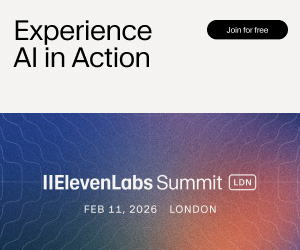Dan Somers of Warwick Analytics promotes the use of social listening platforms that use text analytics models to get greater insights into what your customers are saying.
Social listening has been with us for a while, as has text analytics. These techniques pick out topics and sentiment of issues from social and indeed private data sources to inform brands how their customers are feeling and what they’re talking about.
Some people think that all these tools are much of a muchness. That would be like saying that all animals’ hearing is much of a muchness both in technique and aptitude.
Allow me to indulge this metaphor: Bats can hear higher-pitched frequencies that humans can’t. Elephants much lower. Spiders can ‘hear’ the smallest vibrations on their webs.
The point here is that each of these capabilities has evolved to detect signals for actions, in the above examples to locate prey in the case of bats and spiders and to communicate over long distances in the case of elephants. If the prey adapted, then the hunter would also have to adapt.
Tune Your Text Analytics
This is exactly the case with social listening. Generic text analytics models, e.g. based on generic machine learning or natural language processing (NLP) will pick out generic signals.
But to reap specific granular signals, as well as to adapt to the changing signals in the market, and those specific to that brand, the text analytics models need to be tuned and adaptive to win the equivalent evolutionary arms races of market forces.
Consider the following recent customer service-related queries Tweets (potentially representative of requests into the contact centre too):
- @tesco @LidlGB hey both! We shop in your supermarkets, do you have lists online of products you sell which don’t contain palm oil?
- @sainsburys hi bought leg of lamb for Easter lunch today but after I cooked it, all agreed it smelt off, and so we didn’t eat it or the potatoes that I cooked with it. I checked the bag and the blood residue smelt horrid. Can I get a refund? I can bring it in to store tomorrow
- @asda When are you going to start stocking “Marmite peanut butter”?
- @Morrisons So annoyed with the countless empty shelves in the Burton store today. It was impossible to do a full shop so I just abandoned my trolley, walked out and spent my £100 at Tesco who don’t seem to have the same ridiculous stock issues!!
Don’t Just Listen, Hear!
If you applied a generic model, you might get a sentiment score for each one and pick out some topics or keywords. However, if you were to stop and dream up what the perfect, granular, actionable signals were from each one, you might come up with the following:
- “Environmental concerns – avoiding palm oil”, and “easy information on products containing palm oil”. In other words, there’s a CSR opportunity here to capitalize on any trends in this space.
- “Lamb”, “smelt off”, “refund request”, “festive/celebration”. Clearly, the act of answering that customer’s query and refunding them is important, but again, what if there is a trend in the quality of the lamb. Also, the sentiment of the customer was not overwhelmingly negative, but maybe that was the customer’s manner: Having an Easter lunch ruined is not going to be a great situation.
- “New product suggestion”. If more people are asking for this, or the new product teams are alerted, then this can provide valuable insight into trends and opportunities.
- “Many items out of stock”, “shopped elsewhere”. This is obviously a concern that a customer is churning from this particular shop. They have not indicated they are abandoning the brand (indeed there is a hint that they are loyal customers providing feedback), but clearly there is an issue at that branch.
With generic models you might be lucky to pick up the words “lamb” and “stock” but even then, the word stock would be misleading for Tweet 3. Also, the sentiment scores, if accurate at all, would not be actionable.
Applying AI to Social Listening
So, is it possible to get to these ideal actionable signals, without hand-coding each one? The good news is that it is. AI technology exists which not only generates these granular signals accurately at scale but also allows them to be tuned and adapted as new signals come in.
It flags all potential new signals to a ‘human-in-the-loop’ to validate as they appear, so that nothing is missed, nor does it have to be guessed a priori. The data truly speaks for itself.
For example, if new products or services are introduced by your brand or your competitor, if there are new trends in the market, e.g. environmental concerns, nutrition trends.
By hearing, rather than just listening, you will be able to discern precisely how to delight your customers on a local and brand level. And in the evolutionary arms race, that ability will put you ahead of the competition.
Author: Robyn Coppell
Published On: 19th Jul 2019 - Last modified: 23rd Sep 2019
Read more about - Guest Blogs





































